
Forensic linguistics, legal linguistics, or language and the law is the application of linguistic knowledge, methods, and insights to the forensic context of law, language, crime investigation, trial, and judicial procedure. It is a branch of applied linguistics.

Annie Chapman was the second canonical victim of the notorious unidentified serial killer Jack the Ripper, who killed and mutilated a minimum of five women in the Whitechapel and Spitalfields districts of London from late August to early November 1888.

A series of murders that took place in the East End of London from August to November 1888 have been attributed to an unidentified assailant nicknamed Jack the Ripper. Since then, the identity of the killer has been widely debated, with over 100 suspects named. Though many theories have been advanced, experts find none widely persuasive, and some are hardly taken seriously at all.
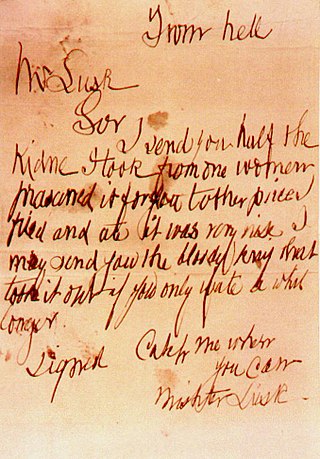
The "From Hell" letter was a letter sent with half of a preserved human kidney to George Lusk, the chairman of the Whitechapel Vigilance Committee, in October 1888. The author of this letter claimed to be the unidentified serial killer known as Jack the Ripper, who had murdered and mutilated at least four women in the Whitechapel and Spitalfields districts of London in the two months prior to Lusk receiving this letter, and whose vigilance committee Lusk led in civilian efforts to assist the police in identifying and apprehending the perpetrator.

Elizabeth "Long Liz" Stride is believed to have been the third victim of the unidentified serial killer known as Jack the Ripper, who killed and mutilated at least five women in the Whitechapel and Spitalfields districts of London from late August to early November 1888.
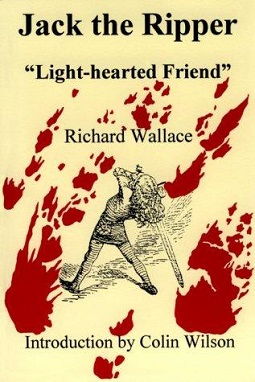
Jack the Ripper, Light-Hearted Friend is a 1996 book by Richard Wallace in which Wallace proposed a theory that British author Lewis Carroll, whose real name was Charles L. Dodgson (1832–1898), and his colleague Thomas Vere Bayne (1829–1908) were responsible for the Jack the Ripper murders.
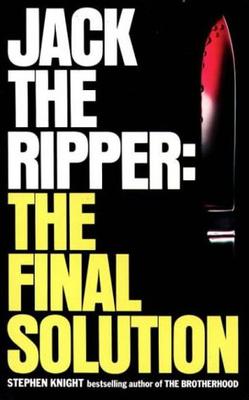
Jack the Ripper: The Final Solution is a book written by Stephen Knight first published in 1976. It proposed a solution to five murders in Victorian London that were blamed on an unidentified serial killer known as "Jack the Ripper".

Catherine Eddowes was the fourth of the canonical five victims of the notorious unidentified serial killer known as Jack the Ripper, who is believed to have killed and mutilated a minimum of five women in the Whitechapel and Spitalfields districts of London from late August to early November 1888.
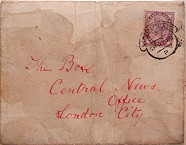
The "Dear Boss" letter was a message allegedly written by the notorious unidentified Victorian serial killer known as Jack the Ripper. Addressed to the Central News Agency of London and dated 25 September 1888, the letter was postmarked and received by the Central News Agency on 27 September. The letter itself was forwarded to Scotland Yard on 29 September.

The Whitechapel Vigilance Committee was a group of local civilian volunteers who patrolled the streets of London's Whitechapel district during the period of the Whitechapel murders of 1888. The volunteers were active mainly at night, assisting the Metropolitan Police in the search of the unknown murderer known as the "Whitechapel Murderer", "Leather Apron" and, latterly, "Jack the Ripper".

The Servant Girl Annihilator, also known as the Midnight Assassin, was an unidentified American serial killer who preyed upon the city of Austin, Texas, in 1884 and 1885. The sobriquet originated with the writer O. Henry. The series of eight axe murders were referred to by contemporary sources as the Servant Girl Murders.
Wearside Jack is the nickname given to John Samuel Humble, a British man who pretended to be the Yorkshire Ripper in a hoax audio recording and several letters in 1978 and 1979.

Jack the Ripper was an unidentified serial killer who was active in and around the impoverished Whitechapel district of London, England, in 1888. In both criminal case files and the contemporaneous journalistic accounts, the killer was also called the Whitechapel Murderer and Leather Apron.

George Akin Lusk was a British builder and decorator who specialised in music hall restoration. He was the chairman of the Whitechapel Vigilance Committee during the Whitechapel murders, including the killings ascribed to Jack the Ripper, in 1888.

The Whitechapel murders were committed in or near the impoverished Whitechapel district in the East End of London between 3 April 1888 and 13 February 1891. At various points some or all of these eleven unsolved murders of women have been ascribed to the notorious unidentified serial killer known as Jack the Ripper.
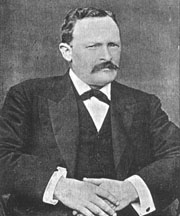
Thomas Horrocks Openshaw was an English Victorian and Edwardian era surgeon perhaps best known for his brief involvement in attempting to solve the notorious Jack the Ripper murders of 1888.
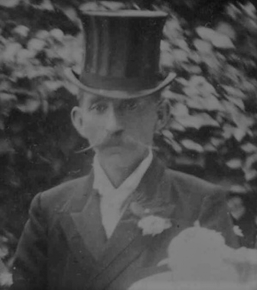
Joseph Lawende was a Polish-born British cigarette salesman who is believed to have witnessed serial killer Jack the Ripper in the company of his fourth victim, Catherine Eddowes, approximately nine minutes before the discovery of her body on 30 September 1888.

The Goulston Street graffito was a sentence written on a wall beside a clue in the 1888 Whitechapel murders investigation. It has been transcribed as variations on the sentence "The Juwes are the men that will not be blamed for nothing". The meaning of the graffito, and its possible connection to the crimes attributed to Jack the Ripper, have been debated for over a century.
The Central News Agency was a news distribution service founded as Central Press in 1863 by William Saunders and his brother-in-law, Edward Spender. In 1870–71, it adopted the name Central News Agency.

Police Superintendent Thomas Arnold was a British policeman of the Victorian era best known for his involvement in the hunt for Jack the Ripper in 1888. It was his opinion that Mary Jane Kelly was not a victim of the Ripper.



















